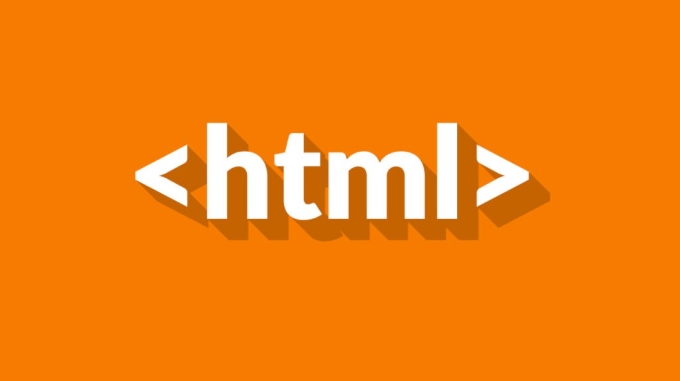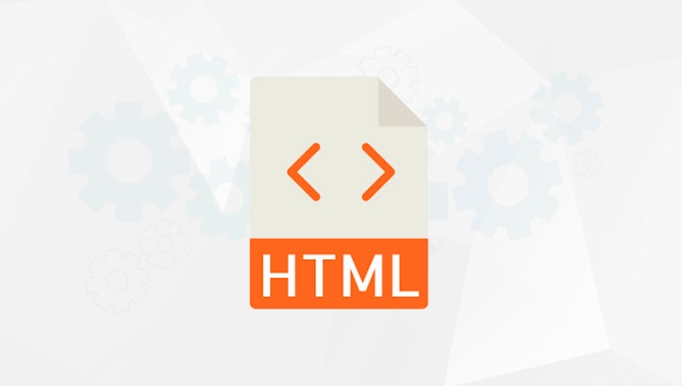 Web Front-end
Web Front-end
 HTML Tutorial
HTML Tutorial
 What is the HTML Imports specification (and why was it deprecated)?
What is the HTML Imports specification (and why was it deprecated)?
What is the HTML Imports specification (and why was it deprecated)?
Jul 09, 2025 am 01:24 AMHTML Imports is a deprecated modular loading mechanism that allows the introduction of external HTML files through and use its contents in the current page. 1. It was used to encapsulate component structures, styles, and behaviors for reuse; 2. It was eliminated due to synchronous loading impacts performance, lack of module system support, inconsistent with the development direction of modern Web Components, and mainstream frameworks turning to JS modularity; 3. Alternatives include using ES Modules to define components in combination with Shadow DOM and Custom Elements, or using build tools to manage templates and component structures.

HTML Imports is a modular loading mechanism used in web development, allowing developers to import an HTML file into another HTML file. Simply put, it allows you to "take" the content of an external HTML document like you would refer to CSS.

But the technology has now been abandoned and replaced by more modern and flexible modular solutions, such as the combination of ES Modules and Web Components.
What is HTML Imports?
The core of HTML Imports is to introduce another HTML file through the <link> tag. The basic writing method is as follows:

<link rel="import" href="component.html">
After it is introduced, the browser will download and parse the HTML file, which you can access through JavaScript and insert into the current page.
This practice was very popular in early Web Component development, especially in frameworks like Polymer. Its advantage is that component structures, styles, and behaviors can be encapsulated in one file and then reused across multiple pages.

Why was it abandoned?
While HTML Imports looks convenient, it has several obvious problems that lead to its gradual elimination:
- The loading method is not flexible enough : HTML Imports is loaded synchronously, which can easily cause page blockage and affect performance.
- No native module system support : After the ES6 module standard appeared, JavaScript has an official modular solution, which is more powerful and more general than HTML Imports.
- Web Components Development Direction Changes : Today's Web Components recommends using JavaScript classes to combine ES Modules to define components instead of relying on HTML file imports.
- Mainstream frameworks are turning to JS modular solutions : React, Vue, Angular and other mainstream frameworks are all built on JavaScript module systems, and HTML Imports gradually loses ecological support.
What are the alternatives?
If you used to organize components or templates with HTML Imports, there are several better alternatives now:
Using ES Modules to introduce JavaScript components
<script type="module" src="my-component.js"></script>
-
Create Web Components in combination with Shadow DOM and Custom Elements
Define the component class directly in JS and register it through
customElements.define(). -
Front-end building tool module packer (such as Webpack, Vite)
HTML templates can be introduced as strings, or the framework's own component system can be used to manage the UI structure.
Basically that's it. HTML Imports once paved the way for the development of web components, but as technology evolves, it has fulfilled its historical mission. It is now more recommended to use a modular development method based on JavaScript, which is not only more compatible, but also easier to maintain and expand.
The above is the detailed content of What is the HTML Imports specification (and why was it deprecated)?. For more information, please follow other related articles on the PHP Chinese website!

Hot AI Tools

Undress AI Tool
Undress images for free

Undresser.AI Undress
AI-powered app for creating realistic nude photos

AI Clothes Remover
Online AI tool for removing clothes from photos.

Clothoff.io
AI clothes remover

Video Face Swap
Swap faces in any video effortlessly with our completely free AI face swap tool!

Hot Article

Hot Tools

Notepad++7.3.1
Easy-to-use and free code editor

SublimeText3 Chinese version
Chinese version, very easy to use

Zend Studio 13.0.1
Powerful PHP integrated development environment

Dreamweaver CS6
Visual web development tools

SublimeText3 Mac version
God-level code editing software (SublimeText3)

Hot Topics
 Explain the purpose of the role attribute in ARIA.
Jun 14, 2025 am 12:35 AM
Explain the purpose of the role attribute in ARIA.
Jun 14, 2025 am 12:35 AM
ARIA's role attribute is used to define the role of web elements and improve accessibility. 1. Role attribute helps assistive technology to understand the functions of elements, such as buttons, navigation, etc. 2. Use role attributes to assign specific roles to non-semantic HTML elements. 3. The role attribute should be consistent with the element behavior and be verified by the accessibility tool test.
 HTML and Design: Creating the Visual Layout of Websites
Jun 14, 2025 am 12:39 AM
HTML and Design: Creating the Visual Layout of Websites
Jun 14, 2025 am 12:39 AM
How to create a website layout? 1. Use HTML tags to define the content structure, such as, ,. 2. Control styles and positions through CSS, using box model, float or Flexbox layout. 3. Optimize performance, reduce HTTP requests, use cache and optimize images, and ensure responsive design.
 How can you ensure your HTML code is readable and maintainable?
Jun 10, 2025 am 12:06 AM
How can you ensure your HTML code is readable and maintainable?
Jun 10, 2025 am 12:06 AM
Improve the readability and maintainability of HTML code can be achieved through the following steps: 1. Use semantic tags, such as, etc. to make the code structure clear and improve SEO effect; 2. Keep the code formatted and use consistent indentation and spaces; 3. Add appropriate comments to explain the code intention; 4. Avoid excessive nesting and simplify the structure; 5. Use external style sheets and scripts to keep the HTML concise.
 How do I stay up-to-date with the latest HTML standards and best practices?
Jun 20, 2025 am 08:33 AM
How do I stay up-to-date with the latest HTML standards and best practices?
Jun 20, 2025 am 08:33 AM
The key to keep up with HTML standards and best practices is to do it intentionally rather than follow it blindly. First, follow the summary or update logs of official sources such as WHATWG and W3C, understand new tags (such as) and attributes, and use them as references to solve difficult problems; second, subscribe to trusted web development newsletters and blogs, spend 10-15 minutes a week to browse updates, focus on actual use cases rather than just collecting articles; second, use developer tools and linters such as HTMLHint to optimize the code structure through instant feedback; finally, interact with the developer community, share experiences and learn other people's practical skills, so as to continuously improve HTML skills.
 How do I use the element to represent the main content of a document?
Jun 19, 2025 pm 11:09 PM
How do I use the element to represent the main content of a document?
Jun 19, 2025 pm 11:09 PM
The reason for using tags is to improve the semantic structure and accessibility of web pages, make it easier for screen readers and search engines to understand page content, and allow users to quickly jump to core content. Here are the key points: 1. Each page should contain only one element; 2. It should not include content that is repeated across pages (such as sidebars or footers); 3. It can be used in conjunction with ARIA properties to enhance accessibility. Usually located after and before, it is used to wrap unique page content, such as articles, forms or product details, and should be avoided in, or in; to improve accessibility, aria-labeledby or aria-label can be used to clearly identify parts.
 How do I create a basic HTML document?
Jun 19, 2025 pm 11:01 PM
How do I create a basic HTML document?
Jun 19, 2025 pm 11:01 PM
To create a basic HTML document, you first need to understand its basic structure and write code in a standard format. 1. Use the declaration document type at the beginning; 2. Use the tag to wrap the entire content; 3. Include and two main parts in it, which are used to store metadata such as titles, style sheet links, etc., and include user-visible content such as titles, paragraphs, pictures and links; 4. Save the file in .html format and open the viewing effect in the browser; 5. Then you can gradually add more elements to enrich the page content. Follow these steps to quickly build a basic web page.
 What is an HTML tag?
Jun 13, 2025 am 12:36 AM
What is an HTML tag?
Jun 13, 2025 am 12:36 AM
HTMLtagsareessentialforstructuringwebpages.Theydefinecontentandlayoutusinganglebrackets,ofteninpairslikeand,withsomebeingself-closinglike.HTMLtagsarecrucialforcreatingstructured,accessible,andSEO-friendlywebpages.
 How do I create checkboxes in HTML using the element?
Jun 19, 2025 pm 11:41 PM
How do I create checkboxes in HTML using the element?
Jun 19, 2025 pm 11:41 PM
To create an HTML checkbox, use the type attribute to set the element of the checkbox. 1. The basic structure includes id, name and label tags to ensure that clicking text can switch options; 2. Multiple related check boxes should use the same name but different values, and wrap them with fieldset to improve accessibility; 3. Hide native controls when customizing styles and use CSS to design alternative elements while maintaining the complete functions; 4. Ensure availability, pair labels, support keyboard navigation, and avoid relying on only visual prompts. The above steps can help developers correctly implement checkbox components that have both functional and aesthetics.





